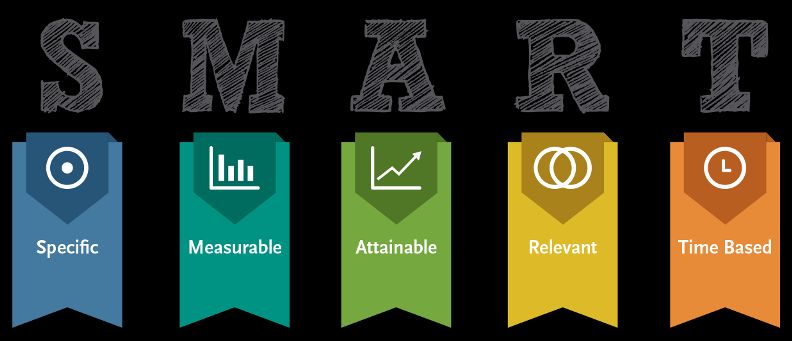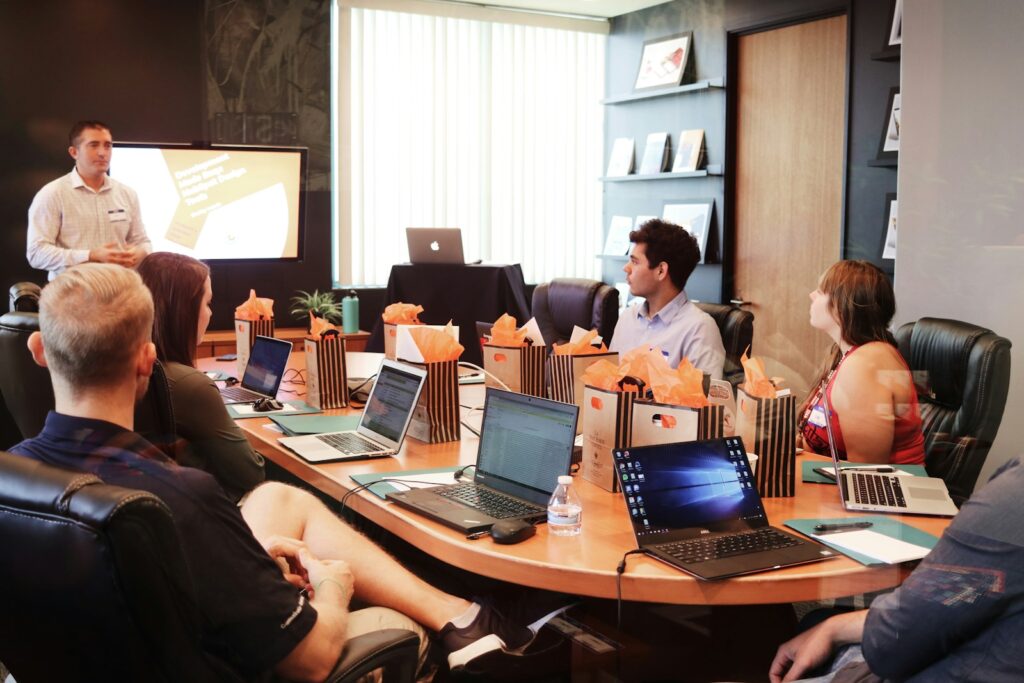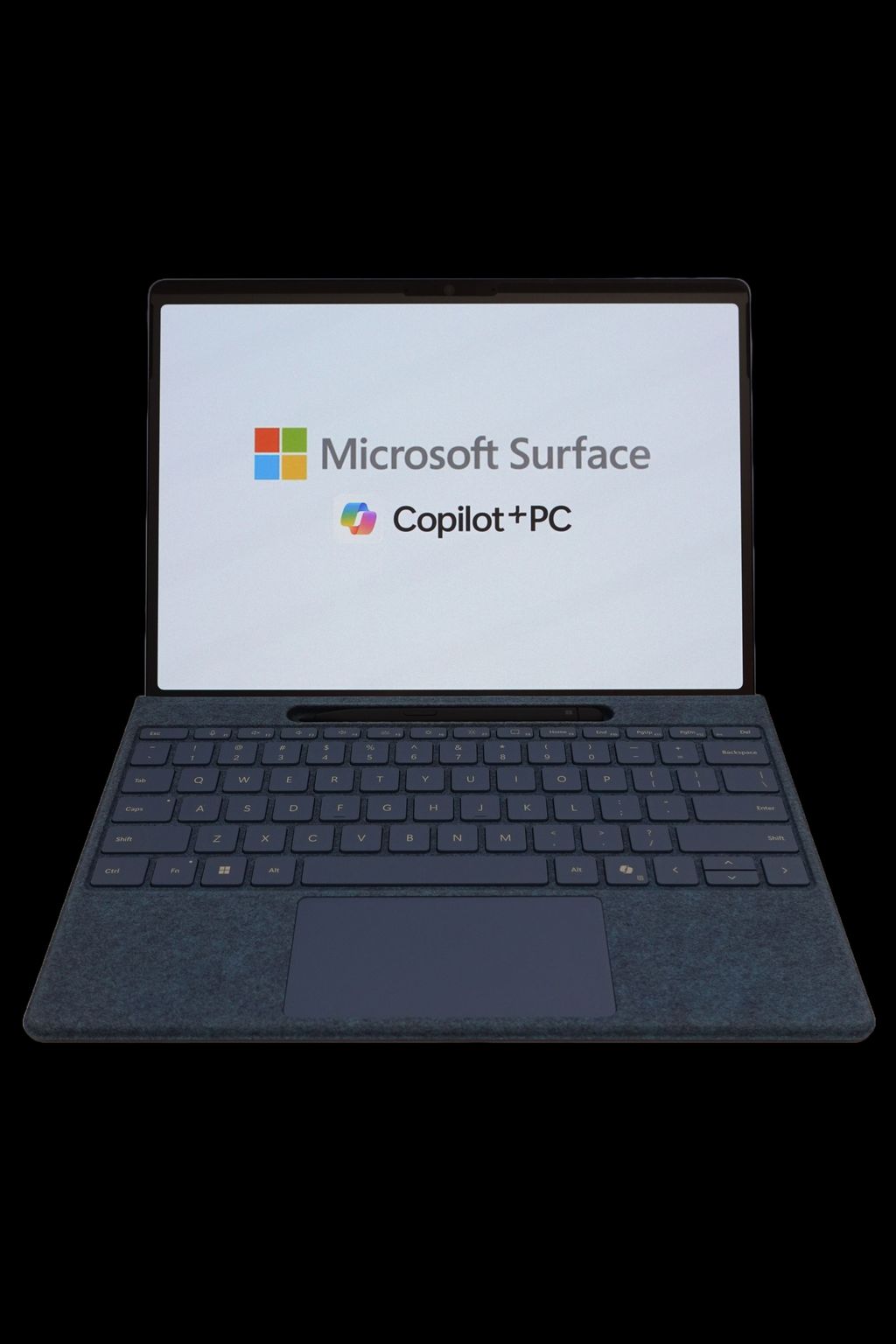
In the dynamic and ever-evolving landscape of technology, where career trajectories can often feel ambiguous, certain individuals distinguish themselves by charting an extraordinarily rapid course of advancement. One such remarkable journey belongs to Ritvika Nagula, a senior software engineer at Microsoft Azure, who, since joining the company in April 2019 as a new college graduate, has achieved an impressive four promotions in just five years. Her story is not merely one of exceptional talent, but of a deliberate, strategic approach to professional growth that offers invaluable lessons for anyone aspiring to accelerate their career.
Nagula’s insights, shared as an as-told-to essay, reveal that her initial understanding of career progression was, by her own admission, a passive one. When she first arrived at Microsoft, she recounts, “I guess I was pretty nice. I did not know that I should be proactive about communicating my career aspirations with my manager.” Like many new professionals, she operated under the assumption that consistent delivery of high-quality work would inherently pave the way for promotions. I just thought that if I consistently delivered good quality work, it would eventually naturally lead to promotions,” she explained.
However, this passive stance, as Nagula quickly discovered, can lead to a significant disconnect. But it was a passive approach, and it can lead to a disconnect where your manager or the leadership thinks that you are not necessarily career ambitious,” she articulated. This crucial realization dawned on her during her inaugural year at Microsoft, marking a pivotal shift in her approach. The hard lesson learned during that first year was that promotions don’t simply materialize; they are the result of active engagement and visible intent. It was this paradigm shift that propelled her on a trajectory of accelerated growth, culminating in her multiple promotions.

Central to Nagula’s transformed strategy is her meticulous and proactive approach to feedback. Recognizing the limitations of semiannual review cycles, where feedback might arrive too late to course correct, she adopted a more frequent and immediate method. At Microsoft, our reviews are semiannual, but that means it could still take six months to find out that you haven’t necessarily reached expectations for certain things. And you don’t have enough time left to course correct at that moment,” she observed.
Her solution is elegantly simple yet profoundly effective: biweekly one-on-one meetings with her manager. Within these regular touchpoints, she ensures that at least once a month, the conversation shifts intentionally towards her career growth. She poses direct, insightful questions designed to elicit actionable feedback: “What do you think is going good? Do you think I could do something better? Is there anything that I might be overlooking and would you suggest I improve on?” This consistent inquiry transforms vague ambitions into concrete, actionable steps.
This method of frequent, structured conversations is a powerful tool for reducing feedback latency. By not waiting for formal review cycles, employees gain timely insights into areas requiring improvement, allowing for immediate course correction. This proactive engagement not only demonstrates a strong commitment to growth but also enables individuals to fine-tune their performance and align with expectations well in advance of any official assessment.

Beyond external feedback, Nagula emphasizes the critical role of personal goal setting and self-awareness. She makes it a point to define clear career goals for herself, such as aiming to reach the next level of seniority within an 18 to 24-month timeframe. This internal metric provides a clear target and a sense of urgency, transforming abstract aspirations into measurable milestones.
The foundation of effective goal setting, she advises, lies in a deep understanding of expectations. The first thing you need to understand is your expectations: what your manager, the team, and the company expect of a person at your current level and what they expect of a person at the next level,” Nagula explained. Once these expectations are clear, the next crucial step is to identify the “gap” between the current and target levels and devise a plan to close it.
This practice is rooted in profound self-awareness, an ongoing assessment of whether one is “hitting all of these checklist items.” It involves asking introspective questions such as, “Am I missing something? Is there something that I don’t know that I should know?” To bridge these knowledge or skill gaps, Nagula strongly advocates for engaging with peers, seeking guidance from work mentors, and maintaining open lines of communication with one’s manager.
Read more about: Cristiano Ronaldo and Georgina Rodríguez: A Decade of Love Culminates in a Spectacle Engagement and a Ring That Dazzles the World

Microsoft, like many large enterprises, provides invaluable resources to aid in this understanding, such as its internal “role library.” Nagula highlights this tool, describing it as “very descriptive. It says that if you’re a software engineer at X, Y, or Z level, this is what the company basically expects you to be performing, and all the tasks that you are expected to be doing on a day-to-day basis.” For those whose companies offer similar resources, she advises diligently checking them and correlating that information with discussions with one’s manager to identify areas for improvement. Knowing the written expectations for the next level eliminates guesswork and makes an individual’s readiness for promotion verifiable.
Perhaps one of the most impactful strategies Nagula employed was her proactive pursuit of end-to-end project ownership. She recognized that for a promotion to a senior level, it was expected that she would deliver a project comprehensively – “From the design phase to implementing and monitoring, and making sure you’re rolling out with limited bugs.” This was a specific competency she identified as essential for her next career step.
Instead of passively waiting for such an opportunity to arise, Nagula initiated frequent conversations with her manager to make her ambition explicit. “I’d say: ‘If you are targeting my next promotion, I believe this is what I need to do. So how can we identify opportunities for such projects?'” This direct and focused approach signaled her readiness and eagerness to take on greater responsibility. Her manager, she noted, then formed the impression that, “Yes, she looks to be ready and she’s interested in doing more and delivering more than what she’s actually doing right now.”
Read more about: A Deep Dive into Irish Heritage: From Ancient Origins to Modern Identity

This strategic communication ensured that whenever new features or significant opportunities emerged, her manager would recall her expressed interest. “That way, whenever there was a new feature or opportunity, my manager would remember, ‘Hey, I have this one person who mentioned that she would be interested in picking up something like this,'” she recounted. This demonstrates a crucial truth: promotions are not solely about completing assigned tasks; they require actively seeking, owning, and driving opportunities.
Indeed, Nagula passionately asserts that “Getting promoted is not just doing the work that you’ve been asked to do; it’s also taking ownership, taking control, and trying to find these opportunities for yourself.” This emphasis on active participation in one’s career trajectory underscores a core tenet of modern professional advancement. It’s about being a driver, not just a passenger.
Furthermore, the impact and alignment of one’s work are paramount. “It’s also not just about what work you are doing; sometimes, it also matters how high the impact of that work is, and it has to align with your team’s goals and the company’s goals,” she explained. This means ensuring that one’s efforts contribute meaningfully to broader organizational objectives, making the value of one’s contributions undeniably clear.
Read more about: Unveiling the Pitfalls: A Former Microsoft HR VP’s In-Depth Analysis of Common Traits Among Ineffective Managers

The power of these straightforward steps lies in their consistent application. Ritvika Nagula’s methodical approach, which involved repeating the signal of intent, diligently closing gaps identified by her managers, and ensuring her impact remained highly visible and aligned with business goals, transformed her career. It’s a testament to the fact that while delivering good quality work is undeniably necessary, it is often insufficient on its own. It is the combination of visibility, explicit intent, and strategic alignment with team and company priorities that truly converts performance into promotion. This repeatable playbook offers a compelling blueprint for professionals aiming for rapid and sustainable career growth.
### Navigating the Future of Work: The Promotion Playbook in the Age of AI and Beyond
The strategic framework that propelled Ritvika Nagula through Microsoft’s career ladder is not just a personal success story; it offers a compelling blueprint for navigating the complexities of the modern workplace, especially as artificial intelligence rapidly reshapes the very nature of work. In this era of profound technological transformation, understanding how to apply and amplify Nagula’s core tenets becomes paramount for anyone aspiring to accelerate their professional journey. The foundational elements of her approach — proactive communication, clear goal setting, and a relentless pursuit of end-to-end ownership — are proving to be more critical than ever.

The advent of AI is fundamentally altering the “sponsorship economy” within major tech firms, influencing how work is assigned, measured, and ultimately valued. Generative systems, such as Microsoft Copilot, are absorbing routine tasks at an unprecedented rate, thereby shifting the definition of “high impact” work. The true value now lies not just in completing discrete technical assignments, but in the ability to define complex problems, orchestrate sophisticated systems, and seamlessly integrate AI outputs into robust, production-ready workflows. Organizations heavily investing in AI are disproportionately rewarding those who can effectively supervise and extract maximum value from their new digital teammates.
This significant shift in expectations naturally favors a distinct set of employee capabilities. Those who can adeptly translate broad business needs into scalable projects, particularly ones that leverage AI capabilities, are becoming invaluable. Furthermore, individuals who consistently own end-to-end outcomes, where human judgment and meticulous oversight are undeniably crucial, stand out. Crucially, demonstrating the supervisory skills required to manage intricate human-plus-agent workflows is no longer a niche skill but a central pillar of advanced roles. This dynamic, in essence, amplifies the promotion behaviors Nagula meticulously describes, making it more probable that managers will sponsor individuals who not only display leadership in complex AI-integrated initiatives but also explicitly communicate their readiness to take on such pivotal roles.
Beyond the shifting nature of tasks, the rise of AI also impacts visibility within the workplace, which is increasingly distributed. While AI-powered tools can offer immense productivity gains, they can also paradoxically obscure individual contributions. Automated reports, synthesized meeting notes, and AI-generated code might make it challenging for managers to precisely discern who contributed what. This is precisely why techniques like frequent, focused conversations with managers and the diligent tracking of clear, documented milestones are exceptionally effective right now. They counteract this potential “invisibility by automation,” establishing a clear and lasting record of an individual’s intent, impact, and proactive contributions that can be readily evaluated by promotion committees.
Read more about: our Guide: 11 Accessible Countries for Americans Seeking a Fresh Start Abroad

Let’s delve deeper into why Nagula’s specific tactics resonate so profoundly, especially in today’s environment. Firstly, her commitment to biweekly one-on-ones with her manager, dedicating at least one monthly discussion to career progression, significantly reduces feedback latency. Waiting for semiannual reviews often means discovering performance gaps too late to course-correct effectively before a promotion cycle closes. By consistently raising career goals and asking direct questions like, “What do you think is going good? Do you think I could do something better? Is there anything that I might be overlooking and would you suggest I improve on?”, employees transform vague career ambitions into concrete, actionable steps. A practical tip here involves using a shared document to track agreed-upon milestones and evidence of progress, actively asking your manager to define specific deliverables that would make a promotion “an obvious next step,” and bringing a concise update to each career-focused check-in, detailing accomplishments, obstacles, and next actions.
Secondly, understanding and leveraging the “role library” or similar leveling rubrics is a game-changer. This practice eliminates guesswork by providing clear, written expectations for both one’s current level and the target level. Many large organizations provide public or semi-public rubrics that meticulously outline the skills, responsibilities, and impact metrics associated with each professional tier. By cross-referencing these rubrics with past promotion packets or examples from peers, and then documenting where one already meets each criterion, an individual can strategically ask for specific projects that address any unmet items, making their readiness for promotion not just a feeling, but a verifiable fact.
Thirdly, Nagula’s emphasis on owning end-to-end projects is perhaps the most potent signal of readiness for advancement. Promotions frequently signify a transition from merely executing tasks to leading comprehensive outcomes. Taking responsibility for a feature or an entire system, from its initial design phase through implementation, monitoring, and final rollout with minimal bugs, showcases invaluable qualities. This demonstrates profound ownership, exceptional cross-team coordination, and a high degree of accountability – the quintessential evidence that an individual is already operating at the next level. To effectively apply this, professionals should actively volunteer for projects that demand cross-functional alignment, rather than limiting themselves to purely deep technical assignments. Furthermore, it is crucial to frame the work in terms of its broader business impact and quantifiable outcomes, as these are the metrics most valued by promotion committees.

The organizational context at Microsoft, particularly its aggressive integration of Copilot and other AI services, further underscores the relevance of Nagula’s promotion signals. The company’s strategic shift has led to a re-prioritization across numerous teams, influencing talent allocation, compensation structures, and promotion tracks to align with these significant AI investments. In this environment, being visibly positioned as an integrator of AI-driven value is an undeniable career advantage. However, this transformation is not without friction. While some teams experience faster promotion and pay acceleration directly tied to AI initiatives, others, especially those in non-AI roles, may perceive a two-tier system emerging, raising concerns about potential stagnation. Despite these challenges, the core promotion playbook remains fundamentally relevant, though the precise definition of “high impact” projects is continually evolving to reflect the AI-first mandate.
Nagula’s approach boasts several inherent strengths and opportunities. It is remarkably actionable and repeatable, making it accessible and applicable across a wide spectrum of engineering and operational roles. Moreover, it aligns seamlessly with managerial incentives; managers naturally seek to staff high-impact projects with reliable, proactive owners. By explicitly signaling their readiness and enthusiasm for such projects, employees simplify the promotion process for their managers. This method also significantly reduces ambiguity, demystifying promotion decisions for both employees and managers alike through clear career goals and diligent progress tracking. Crucially, the emphasis on end-to-end ownership and human oversight within complex systems directly maps to the supervisory and orchestrational roles emerging around sophisticated AI systems, effectively future-proofing one’s career trajectory.
However, no strategy is without its risks or blind spots. One potential pitfall is mistaking visibility for mere optics; repeatedly asking for promotions without consistently demonstrating tangible growth can unfortunately backfire, creating an impression of entitlement rather than ambition. The signal of intent must always be robustly backed by concrete evidence, measurable outcomes, clear scope definition, and strong stakeholder endorsements. Another significant concern is the risk of burnout and fostering an unsustainable “always-on” ambition. While rapid career acceleration is undeniably appealing, it can come at a considerable personal cost if the expansion of responsibilities lacks adequate support and sustainable resourcing.
Furthermore, structural inequities within organizations can present a formidable challenge. As firms increasingly channel resources into strategic AI initiatives, not all career tracks may benefit equally. Employees in areas such as customer support, regional operations, or those maintaining legacy systems might find fewer clear pathways to the high-visibility, AI-centric projects that so frequently accelerate promotions. Organizations must proactively manage these transitional costs to prevent potential morale declines and retention issues. Lastly, an overreliance on a single manager’s advocacy, without cultivating a broader network of sponsors, can be limiting. While a manager’s support is vital, in larger companies, promotion decisions often involve cross-functional sponsors and senior advocates. Building a wider circle of influence significantly reduces dependency on any single managerial pipeline.
For those eager to translate this potent playbook into a concrete 12-month promotion plan, several actionable steps can be taken. Begin by thoroughly documenting your baseline, mapping the internal leveling rubric against your current responsibilities to pinpoint 3-5 specific gaps that need addressing. Next, set a realistic target date for achieving the next level, perhaps 12-18 months out, and meticulously break this down into achievable quarterly milestones. Crucially, establish a shared progress tracker with your manager and commit to monthly, dedicated promotion check-ins. Identify and proactively volunteer for at least one end-to-end project that aligns directly with your team’s top strategic priorities. Additionally, solicit at least two cross-team endorsements from peers or product partners who can genuinely attest to your impact and capabilities. Finally, prepare a concise “promotion packet” draft well in advance of the review period – a one-page summary highlighting your goals, the compelling evidence of your work, and the tangible outcomes achieved. This structured sequence effectively converts vague ambition into verifiable deliverables and simultaneously expands your crucial circle of advocates.
The broader evidence from across the industry consistently reinforces the efficacy of this pattern; Nagula’s approach is far from unique. Numerous practitioner accounts and career-strategy posts within the tech sector echo these same core strategies: the importance of early intent signaling, the necessity of measurable outcomes, and the strategic timing of managerial conversations well ahead of formal review cycles. These corroborating narratives provide strong empirical support for the practical validity of this widely understood playbook for career mobility in large technology companies. Moreover, contemporary organizational research and practitioner guidance in the AI era increasingly emphasize competencies such as AI supervision, sophisticated cross-functional orchestration, and clear impact ownership—all of which directly align with promotion criteria in modern engineering ladders.
In final analysis, the compelling strength of the Microsoft engineer’s account lies in its remarkable practicality. The recommended actions are straightforward, inexpensive to implement, and critically, they align precisely with how promotion decisions are genuinely made in a multitude of large tech corporations: through solid evidence, consistent visibility, and strong sponsorship. However, it is essential to acknowledge that this success story is conditional. Rapid promotions are inherently dependent on the prevailing organizational context, the presence of timely opportunity windows, and the availability of high-impact projects. In the accelerating AI era, such high-impact projects are increasingly concentrated within teams actively building and operationalizing generative systems, a concentration that simultaneously creates immense opportunity for some while potentially fostering inequity for others. Professionals who diligently adopt Nagula’s proven habits undoubtedly maximize their individual chances for advancement, but it remains a crucial imperative for companies to simultaneously ensure equitable and transparent routes for advancement across all non-AI-centric career tracks.
The promotion playbook, distilled to its essence, offers a clear checklist: Be explicit about your target level and timeline in writing; Meet frequently, scheduling biweekly one-on-ones and dedicated monthly promotion discussions; Map the rubric, using internal leveling resources to precisely identify gaps; Own outcomes by driving at least one end-to-end project directly linked to business goals; Build sponsors by securing endorsements beyond your immediate manager; and crucially, Guard wellbeing, ensuring that each added responsibility comes with adequate support and sustainable resourcing.
**Conclusion:** Ritvika Nagula’s insightful account serves as a timely and powerful reminder that career mobility in the dynamic world of tech remains an intricate interplay between deliberate intent and demonstrable impact. In an era where artificial intelligence is emerging as both a formidable multiplier of productivity and, in some contexts, a gatekeeper of value, the very behaviors she meticulously models—transparent goal setting, the relentless pursuit of frequent and actionable feedback, and the unwavering commitment to demonstrable end-to-end ownership—are rapidly becoming the essential currency of promotion decisions. Those who thoughtfully combine these proven practices with a vigilant attention to personal sustainability and a broader advocacy for equitable opportunity design will undoubtedly position themselves for the most successful and responsible advancement in our rapidly evolving workplace.





